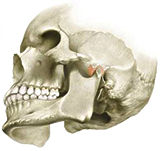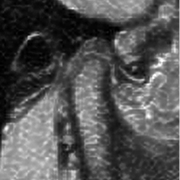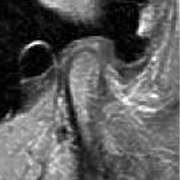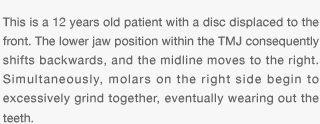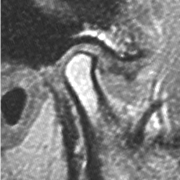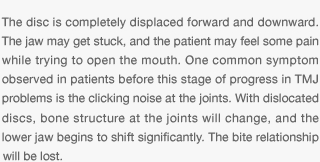2. Harmony between the temporomandibular joints (TMJs) and tooth fit
There is a direct relationship between tooth fit and the TMJs. As shown in the figure, the mandible has teeth in the middle of the bone, and the ends (condyles) are seated in the joints. Harmonizing the TMJs and tooth fit is one of the important missions of orthodontic treatment.
A TMJ problem may be associated with joint sound, difficulty opening the mouth or TMJ pain. However any of these symptoms may be caused by other factors than tooth fit, so differential diagnosis is needed.
With children, TMJ problems have direct effect on jaw growth, and such cases therefore must be diagnosed with care.
 |
Lower jaw bone of animal |
When purposely creating a positional shift of the disc in animals' right TMJ, lower jaw growth is limited on the right side. This results in a displacement of the lower jaw's midline toward the right, as seen in the figure. An analogy would be driving a car and stepping onto a brake that only works on the right side; the car will instantly spin to the right. When this happens, the right side of the lower jaw is not only shorter in length, but is also suppressed vertically in its growth. As this experiment demonstrates, TMJ problems greatly affect lower jaw growth.
TMJs and discs
Now, let's take a look at the mechanism of TMJs through patients' MRI and CT images.
